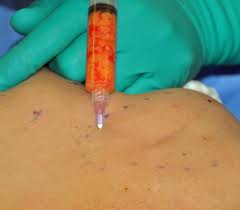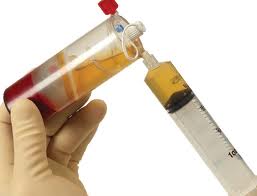Filling of the deflated and aging face has become as popular as any method of facelifting. Using numerous and differing combinations of injectable fillers, certain areas of the face can be volumetrically expanded. To some degree and in the right locations, this does create a lifting effect although the use of that term is a bit overstated. Filling can certainly have a facial rejuvenating effect but it should never be confused with repositioning tissues.
Facelifts have a prominent role in facial rejuvenation, as they should, but they provide virtually no volumetric enhancement. For some patients, particularly those women with thinner faces, a facelift may actually have a negative volumetric effect. As the tissues are tightened across the cheek and lateral facial areas, an almost collapsing effect can be seen with less visible midface fullness. This is one reason many contemporary facelifts employ the use of injectable fillers, particularly using the patient’s own fat.
There are numerous proponents for filling and lifting in facial rejuvenation and much of the controversy about which is better is rooted in the doctor’s specialty and training. For those who are trained and experienced in facelift surgery (e.g., board-certified plastic surgeons), it is more of a matter of mixing in fillers with traditional facelift techniques to get the best overall surgical result. For those doctor’s who practice is limited to non-surgical approaches to facial rejuvenation, the use of injectable fillers is the backbone of their offerings. They understandably are devout believers in the exclusivity of their approach and that has lead to a lot of creative marketing that largely uses the concept of a liquid or filler ‘facelift’ treatment.
These different facial rejuvenation approaches are confusing for potential patients. Much of that comes from the hope and perception that that a more youthful appearance can be obtained by a simple injection rather than a surgical tissue lifting approach. Aiding this potential confusion has been the more recent technologic innovations in autologous tissue harvesting using one’s own blood, fat and stem cells. Their liquid compositions make them easy to be used as injectable agents. While the science behind their effectiveness in facial rejuvenation is largely limited to photographic demonstration, their autologous nature nonetheless makes them very appealing to patients…who are susceptible to overzealous promotion.


Autologous injectable facial rejuvenation can use either fat or PRP, both patient-derived agents. They each have a role to play in facial anti-aging therapies but they are not interchangeable. PRP is used exclusively in non-surgical approaches while fat injections can be used in both surgical and non-surgical treatments.
Dr. Barry Eppley
Indianapolis, Indiana


